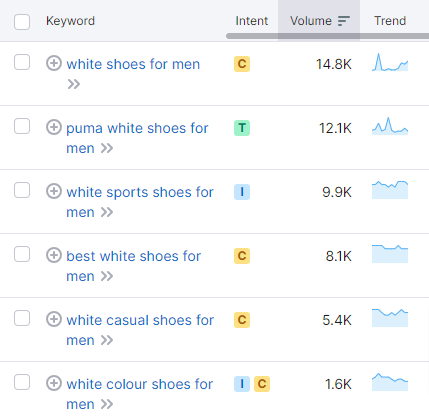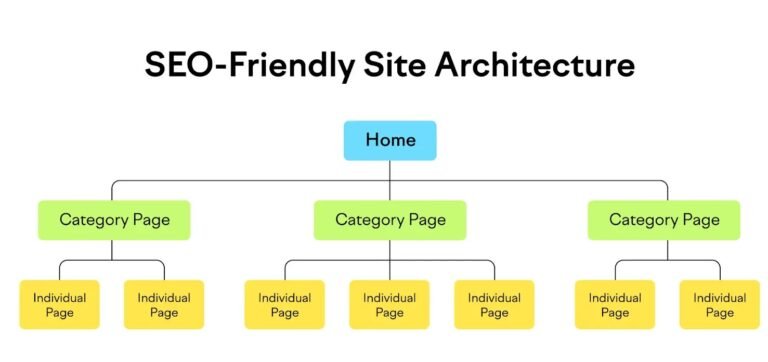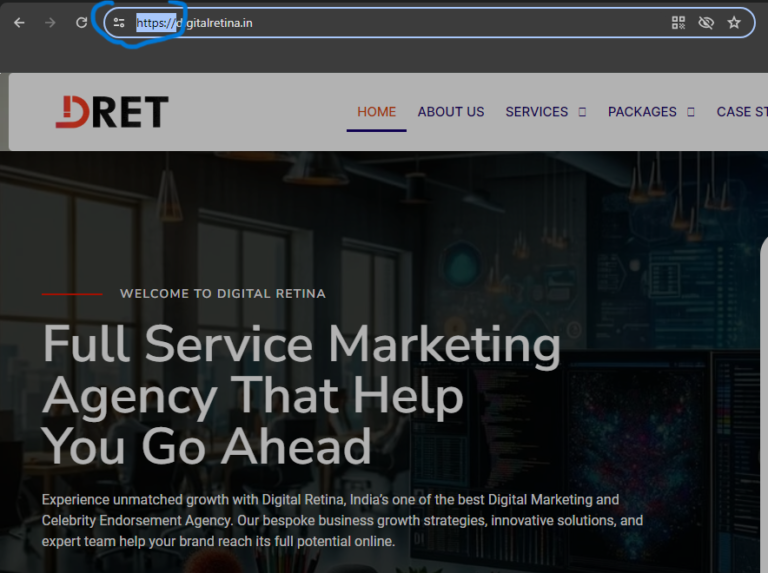
Ecommerce SEO: Strategies to Drive Traffic and Increase Sales

What Is Ecommerce SEO?
Ecommerce SEO, short for Ecommerce Search Engine Optimization, is the process of optimizing online stores to rank higher in search engine results pages (SERPs). This strategic approach focuses on improving website visibility and attracting organic traffic, leading to increased sales and revenue for ecommerce businesses. By enhancing website content, optimizing product pages, and refining technical aspects, Ecommerce SEO aims to boost online presence and attract potential customers searching for products or services offered by the ecommerce store. It’s a vital component of digital marketing strategies for online retailers looking to thrive in competitive markets.
However, numerous online stores overlook it as a way to enhance their search engine ranking. Instead, they choose to utilize paid ads or social media. While these approaches yield substantial results, they necessitate ongoing effort and a steady stream of income. Businesses invest billions of dollars annually in advertising, a figure that continues to grow due to escalating competition.
Reasons why SEO is Important for your Ecommerce Website
Attracts Quality Traffic: SEO helps your website appear higher in search engine results, drawing in consumers actively searching for your products, which can lead to increased sales.
Cost-Effective Marketing: Unlike paid ads, SEO is a cost-effective strategy that provides long-lasting results, helping you reach potential customers without continuous spending.
Builds Brand Credibility: Ranking high in search results can enhance your brand’s credibility, as users often trust sites that appear on the first page of search engines like Google.
Enhances User Experience: SEO involves optimizing your site’s layout, speed, and content, improving the overall user experience, and encouraging visitors to stay longer and explore more.
Competitive Advantage: Implementing effective SEO strategies can give you an edge over competitors by ensuring your site ranks higher than theirs in search results, attracting more customers to your business.
Ecommerce SEO: Proven Strategies
1. Ecommerce keyword research
Ecommerce keyword research involves identifying the terms and phrases potential customers use when searching for products online. This process helps businesses optimize their online content and advertising strategies to rank higher in search engine results, attract targeted traffic, and increase sales. Effective keyword research considers search volume, competition, and relevance to the product or service, enabling a strategic approach to digital marketing and improved online visibility.
A. Long-tail Keywords
Long-tail keywords, often specific and longer phrases, are crucial for e-commerce SEO as they target more precise search queries. These keywords cater to users with specific intentions, leading to higher conversion rates due to their focused nature. Utilizing long-tail keywords helps businesses rank higher in search results for niche markets, reducing competition and increasing visibility. Moreover, they align closely with customer needs, enhancing user experience and improving website relevance, ultimately driving targeted traffic and boosting sales in the e-commerce landscape.

B. Intent Based Keyword

Intent-based keywords in e-commerce SEO are pivotal for understanding and matching the underlying purpose of user searches. These keywords categorize user intent into buying, learning, or navigating, enabling businesses to tailor content and product listings accordingly. By focusing on intent-based keywords, e-commerce websites can enhance their search relevance, directly addressing the specific needs and stages of the customer journey.
2. Site Architecture for Ecommerce
In e-commerce SEO, the organization and structure of your website’s pages significantly influence search engine rankings. The layout of your site also affects the user experience (UX), necessitating a clear and navigable structure for both visitors and search engine bots. As you manage your product offerings and categories, maintaining a straightforward site structure becomes challenging. To avoid complications as your business expands, ensure your website’s architecture is scalable and user-friendly, allowing access to any page within a few logical clicks.

Simplicity should not be underestimated; a complex navigation system can frustrate users, leading them to rely heavily on the back button to navigate your site. Avoid the need for frequent restructuring with each new product category addition. Your homepage typically holds the most SEO link authority, as it’s often linked by other businesses. Consequently, product pages farther from the homepage have diminished authority, underscoring the importance of a well-considered site structure.
3. Manage Other Technical SEO Tasks
Use HTTPS
Implementing HTTPS is beneficial for a website’s technical SEO as it ensures secure data transfer between the server and the user’s browser. This encryption protocol enhances user trust and confidence by safeguarding personal information and transactions. Search engines like Google prioritize secure websites in their rankings, making HTTPS a crucial factor for improving search visibility. Additionally, HTTPS contributes to a positive user experience, reducing the risk of cyber threats and increasing the likelihood of higher engagement and conversion rates. Therefore, adopting HTTPS is not only a security best practice but also a strategic SEO advantage.
Example of Website which is not secure by https.

This Website use Https secure in their domain URL.

Mobile-Friendly
Having a mobile-friendly website is crucial in today’s digital landscape. With the increasing use of smartphones and tablets for internet browsing, a mobile-friendly site ensures that users have a positive experience regardless of the device they use. This adaptability improves accessibility, enhances user engagement, and increases the likelihood of retaining visitors.
Page Speed
Page speed is a critical factor in e-commerce SEO, as it directly impacts user experience and search engine rankings. Fast-loading pages enhance customer satisfaction, reduce bounce rates, and encourage longer browsing sessions, which can lead to increased conversions and sales. Search engines prioritize websites that provide a quick and efficient user experience, making page speed a significant determinant in how a site ranks in search results. For e-commerce sites, where every second counts, optimizing page speed is essential for maintaining a competitive edge, improving visibility, and maximizing the potential for online success.
4. On-Page SEO
On-page SEO refers to optimizing specific web pages to achieve higher rankings and attract relevant traffic from search engines. This process includes refining the content and HTML source code of a page to improve its visibility and relevance to specific keywords. Key elements of on-page SEO include optimizing title tags, meta descriptions, header tags, and images, as well as ensuring high-quality, keyword-rich content. On-page SEO also encompasses improving site structure and user experience, making it easier for search engines to crawl and index the website.
4.1 Title Tags is Clear and Simple
In SEO, title tags should be clear and simple, serving as concise descriptors of a webpage’s content. A well-crafted title tag is crucial for improving click-through rates and search engine rankings, as it gives users and search engines a quick overview of the page’s topic.

4.2 Meta Description

Meta descriptions in SEO are brief summaries of a webpage’s content that appear under the title in search engine results. While they don’t directly influence search rankings, they are vital for attracting user clicks. A well-written meta description provides a clear and compelling overview of the page, encouraging users to click through to the website. It should include relevant keywords and a call-to-action to enhance its effectiveness in driving targeted traffic.
4.3 Feature Your Items with Schema Markup

Featuring your items with schema markup on your website enhances their visibility and comprehension by search engines. Schema markup is a code that you add to your website to help search engines return more informative results for users. It explicitly tells search engines what your content is about, enabling rich snippets like star ratings, prices, and availability to appear in search results. This detailed information can significantly improve click-through rates and attract more qualified traffic to your site.
Type of Schema Used for Ecommerce Website
Organization or local business schema.
Product schema.
Reviews and ratings. schema
Video schema.
Breadcrumb schema.
Site search schema.
Article schema.
FAQ schema.
5. Product Images
Having clear product images on a website is essential for selling products effectively and improving SEO. High-quality images enhance the user experience, providing a better understanding of the product and encouraging purchase decisions. From an SEO perspective, clear and optimized images can improve a website’s search engine rankings by increasing user engagement and reducing bounce rates.
6. Create Backlinks
Backlinks, which are hyperlinks from other websites to yours, play a crucial role in enhancing your e-commerce SEO strategy by driving significant traffic and bolstering your site’s trust and authority. Search engines interpret backlinks as endorsements of your website’s quality, underscoring the importance of securing reputable and relevant backlinks. For example, if you specialize in coastal décor and a leading interior design blog links to your product page in their article on “Beach Décor Essentials for Your Home,” this acts as a recommendation for your products. Such endorsements can direct their readers to your website, increasing visits to your product page and potentially boosting sales.
Find a Trusted Ecommerce SEO Partner
Looking for reliable eCommerce SEO services? Discover the expertise of a top SEO Company in Noida, adept in elevating your online store’s visibility. Our bespoke eCommerce SEO solutions are designed to enhance your digital presence, driving increased traffic and sales. Trust us to be your ecommerce SEO partner, ensuring your business achieves and maintains a competitive edge in the digital marketplace. Experience the difference with our proven strategies tailored to your unique needs.

Malkit Singh

Jayant Singh
Meet Jayant Singh, the visionary CEO of Digital Retina. With over 8 years of expertise in digital marketing and brand growth strategies, Jayant's leadership has led to the successful transformation of numerous businesses. His knack for innovative solutions continues to shape the digital marketing landscape.


Comprehensive Guide to PPC Strategies: How to Make the Most of Your Paid Advertising

